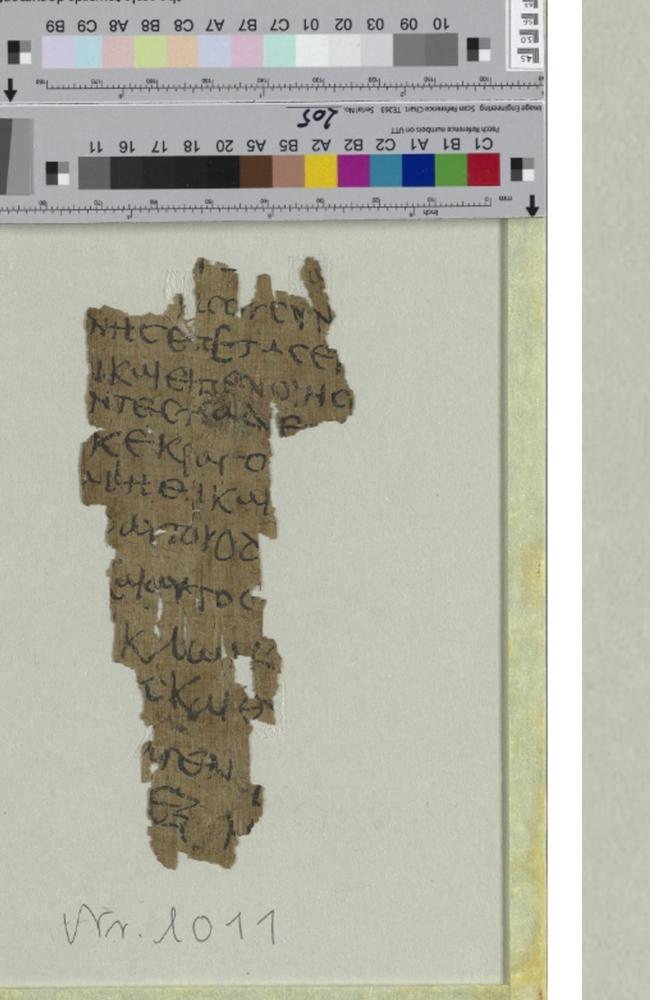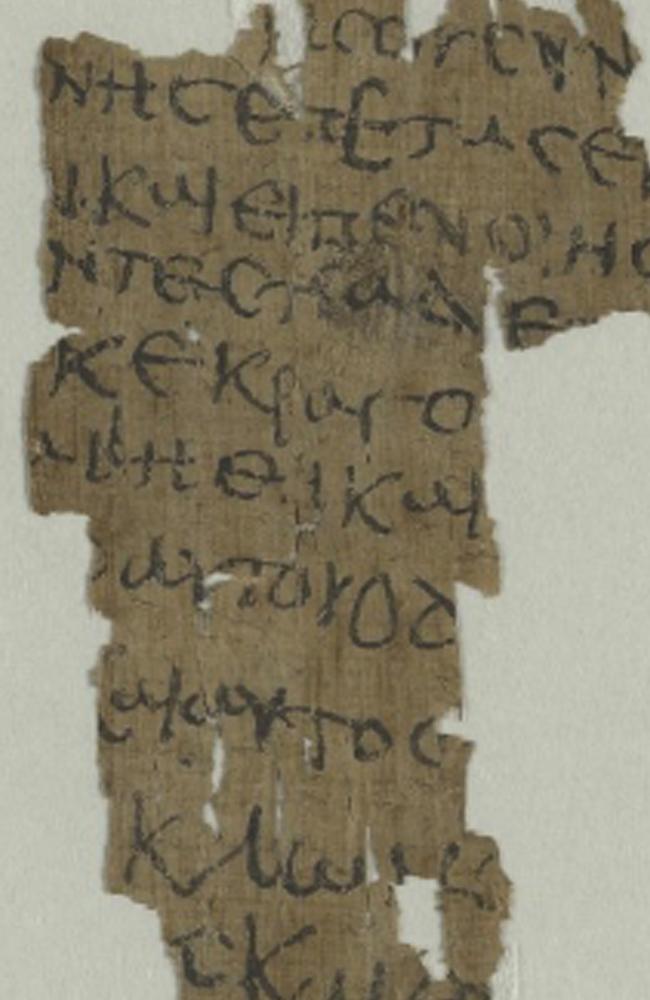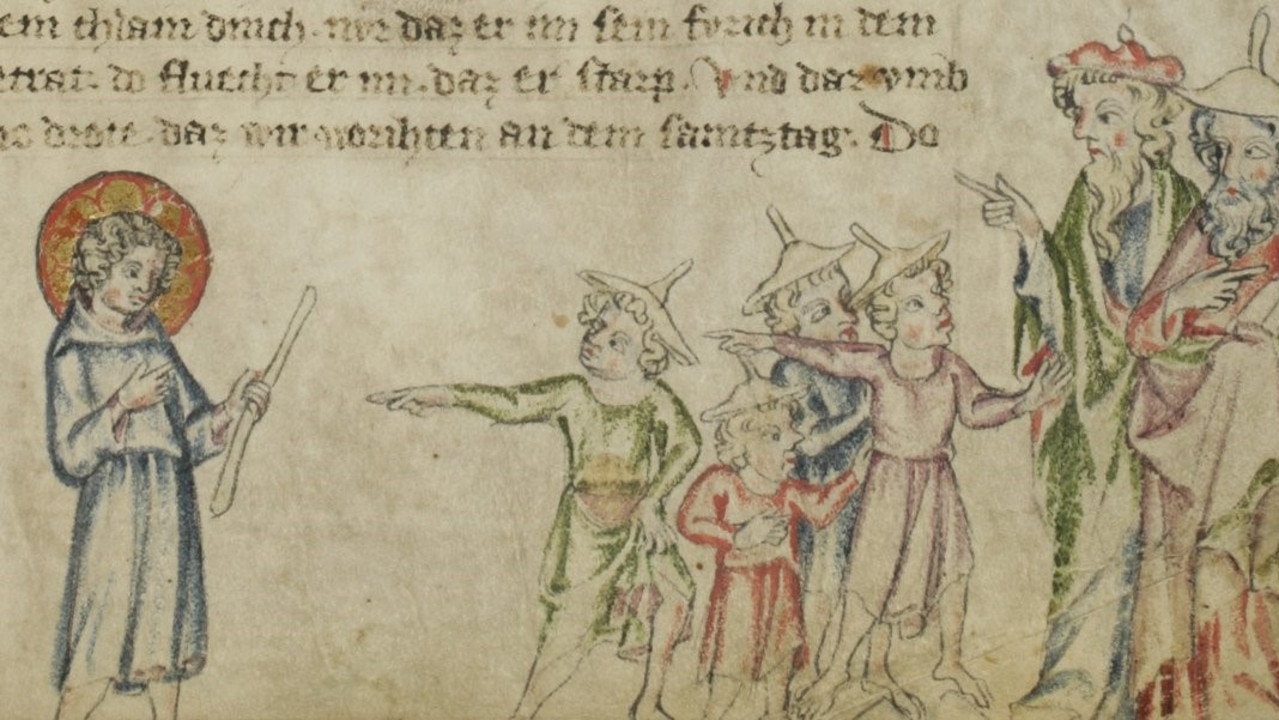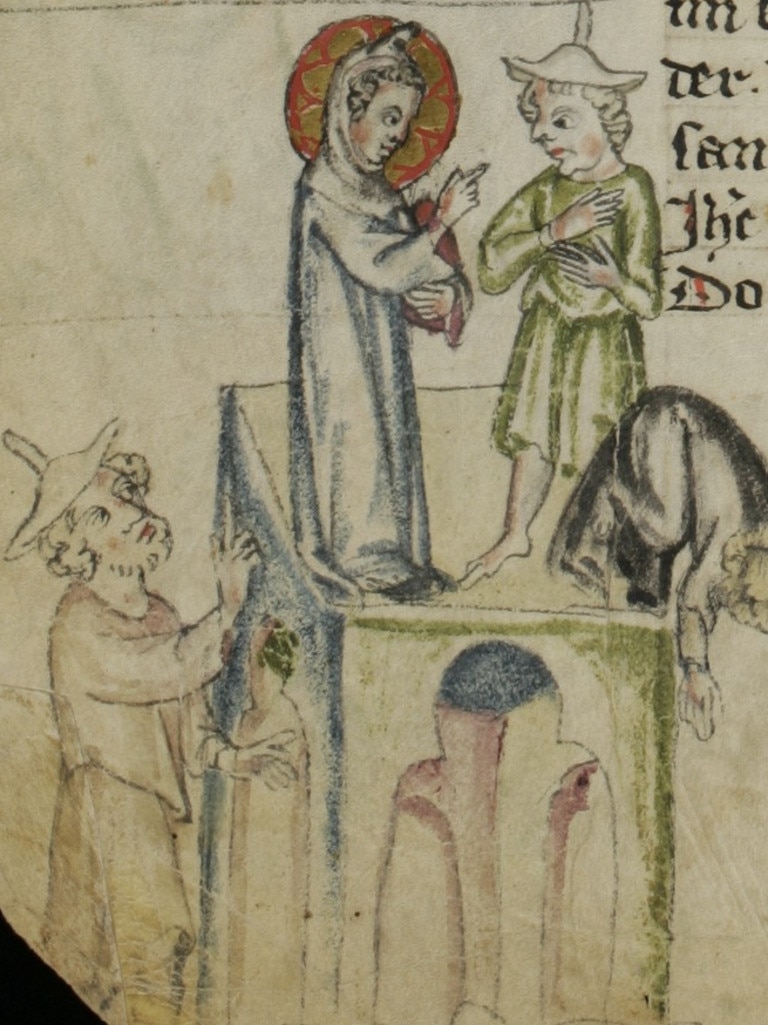Secret Bible text changes everything
A mislabeled fragment of Egyptian papyrus tucked away in a German library has blown apart thousand-year-old perceptions about the Bible, and Jesus himself.
The Son of God was a terror as a pre-teen.
At least if a newly discovered papyrus about Jesus Christ’s childhood is to be believed.
He fibbed. He tantrumed. He killed.
If so, little wonder the canonical (accepted) Gospels of the Biblical New Testament don’t say much about the Christian messiah’s early years.
The books of Matthew and Luke offer the only accounts of his birth.
Luke adds the story of a 12-year-old messiah-to-be stunning the theologians of the Second Temple in Jerusalem with his deep understanding of Jewish lore.
The Infancy Gospel of Thomas is significantly more comprehensive - and less righteous.
It purports to be an eyewitness account of the juvenile Jesus’ life in Nazareth. By implication, it’s written by his brother Judas Thomas.
This text was one of many put before Christian bishops drawn together from across Europe and the Middle East in 325 AD by Emperor Constantine.
The powerful convert wanted a standardised religion to help unify his rapidly disintegrating Roman Empire.
The 27 books of the New Testament as we know it today, were their final choice.
Dozens of texts claiming to be gospels, letters from the disciples and collections of Jesus’ sayings were rejected.
These were declared to be, at best, apocryphal (of dubious authenticity), or worst - heretical (against the religion).
The Infancy Gospel of Thomas didn’t make the cut.
Early Christian theologian and Bishop of Rome Hippolytus had previously declared it a dangerous fake in his decree Refutation of All Heresies, written around 230AD.
A century later, Constantine’s bishops agreed.
As such, all copies were ordered to be destroyed on sight.
Almost all were.
But a mislabeled fragment of Egyptian papyrus filed away in a German library has turned out to be the oldest known surviving copy of the original text.


Catalogue error
Its inventory card states: P.Hamb.Graec. 1011.
The 11cm by 5cm fragment contains just 13 lines of Greek text.
It sat ignored at Berlin’s Hamburg Carl von Ossietzky State and University Library for decades.
But researchers Dr Lajos Berkes and Professor Gabriel Nocchi Macedo recognised its true significance.
“It was thought to be part of an everyday document, such as a private letter or a shopping list because the handwriting seems so clumsy,” explains Dr Berkes. https://www.hu-berlin.de/en/press-portal/nachrichten-en/june-2024/nr-2464 “We first noticed the word Jesus in the text. Then, by comparing it with numerous other digitised papyri, we deciphered it letter by letter…”
Previously, a codex dating from the 11th Century was the oldest known fragment of the Infancy Gospel written in its original form.
“From the comparison with already known manuscripts of this Gospel, we know that our text is the earliest,” adds Dr Berkes. “It follows the original text, which, according to the current state of research, was written in the 2nd century AD.”
While the papyrus is a tiny fragment, most of the stories contained in the Infancy Gospel have survived through the centuries in some form or another.

It had been widely quoted by early theologians probing the boundaries of acceptable belief. And the tales of the young Jesus persisted in popular storytelling through Antiquity and into the Middle Ages - possibly for their shock value.
But it’s because there is so little surviving of the original text that determining the gospel’s origins is problematic. The general consensus of Biblical scholars is that it was most likely first written down somewhere between 110AD and 130AD.
This particular fragment survived by chance. It is believed to have been discarded from a monastery’s scribe school. That’s because the handwriting is so poor.
“The fragment is of extraordinary interest for research,” adds Dr Berkes. “On the one hand, because we were able to date it to the 4th to 5th century, making it the earliest known copy. On the other hand, because we were able to gain new insights into the transmission of the text.”
The scrap comes from the opening pages of the Infancy Gospel, part of a story called The Vivification of the Sparrows.
It’s supposed to detail Jesus’ second-ever miracle.


Popular Apocrypha
Young Jesus is not the Jesus Christ we know. At least according to Thomas.
Perhaps it’s just sibling rivalry.
The Bible says Jesus was not an only child. The gospels of Mark, John and Paul tell of brothers. Mark (3:32, 6:3) mentions sisters.
Thomas means “twin”. And early Christian traditions talk of Jesus having a brother Judas (Jude) Thomas.
The young family grew up in Nazareth. It was an insignificant backwater. Just another little fishing village in unfashionable Galilee, now the northern part of modern-day Israel.
The heretical gospel starts with Jesus aged five. He’s playing by a stream. But he doesn’t like the water being so dirty. So he orders it to clear up: His first miracle.
He then proceeds to make 12 sparrow figurines out of clay. On the Sabbath Day.
Jewish law insists nothing resembling work is permitted on the Sabbath - the day God himself took a break from creation.
But the young Jesus is seen industriously moulding the mud by a pious neighbour. Naturally, they immediately inform Jesus’ legal father - Joseph - of the profane moral offence.
An outraged Joseph storms down to the waterfront, shouting: “Why did you do this on the Sabbath? It’s not legal!”
Jesus, seeing his father upset, puts on an innocent face and orders: “Sparrows, be gone!”.
They come to life and fly off: His second miracle.
What clay sparrows?
For the third miracle, Jesus is again playing in a stream. But a playmate muddies the water with a willow branch. An enraged Jesus curses the boy, proclaiming that he shall wither like a tree and bear no leaves or fruit.
The offending boy instantly withers with age, and his upset parents confront the despairing Joseph about the behaviour of his child.
The Infancy Gospel goes on to relate several similar temper tantrums.
Young Jesus is bumped into by a running child. He withers him on the spot.
Then there’s the time Jesus refuses to do his schoolwork.
Joseph has paid for writing tuition. But the young messiah refuses to recite the Greek alphabet. When the teacher cuffs him on the head for insolence, Jesus curses him - and he falls down dead.
Young Jesus earns such a reputation that he eventually gets blamed for something he (possibly) didn’t do. He was playing with friends on a roof. One fell and broke his neck.
An onlooker accuses Jesus of pushing the boy.
So Jesus jumps down and demands of the dead body: “Xenon, did I throw you down?”
Xenon comes back to life, declaring: “No, Lord, you did not cast me down. You have raised me!”




